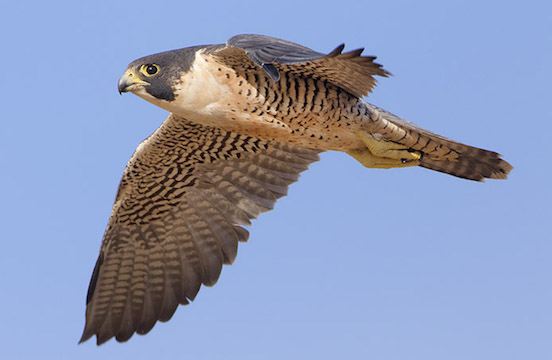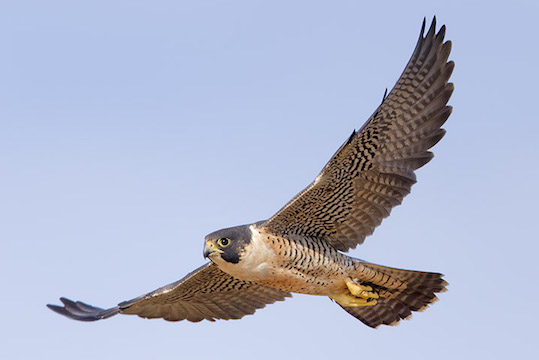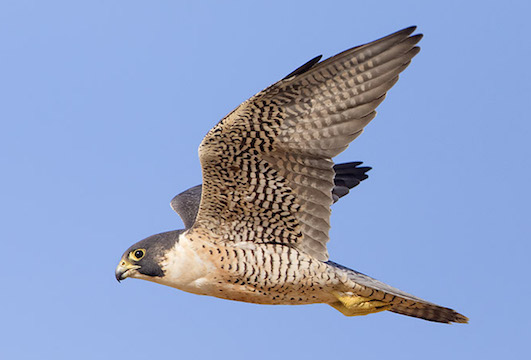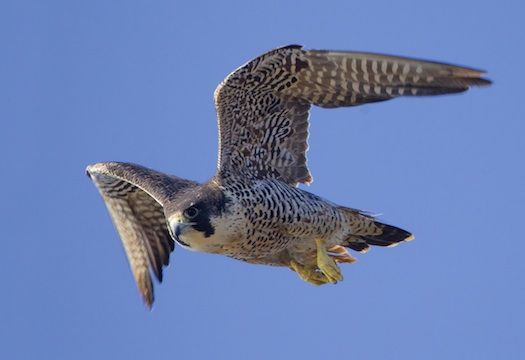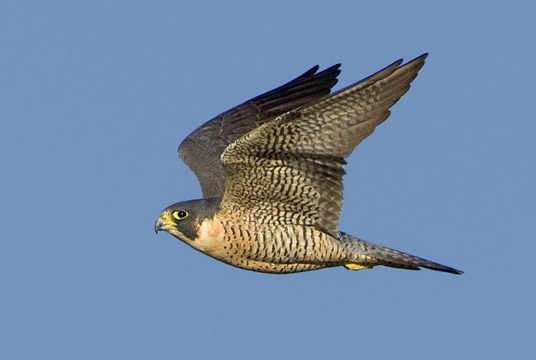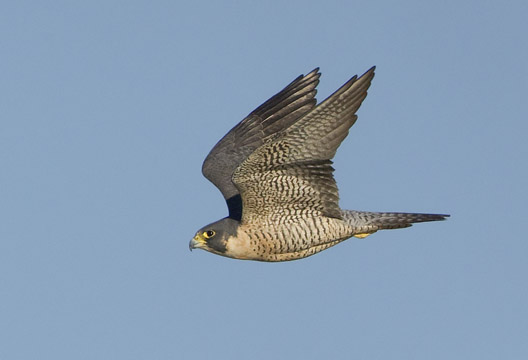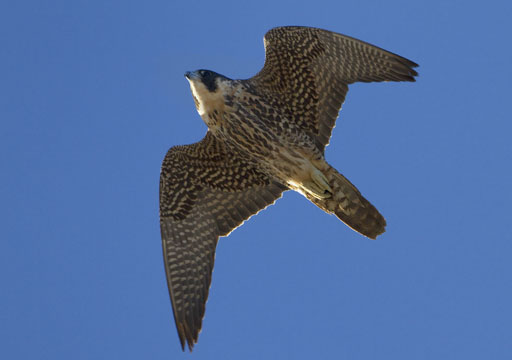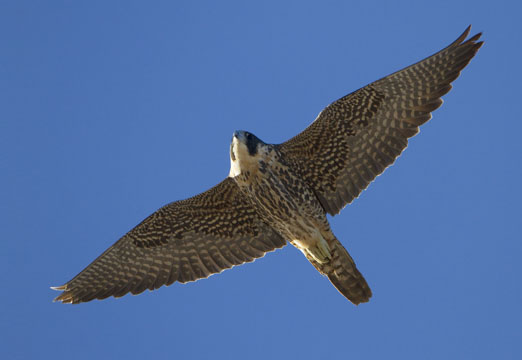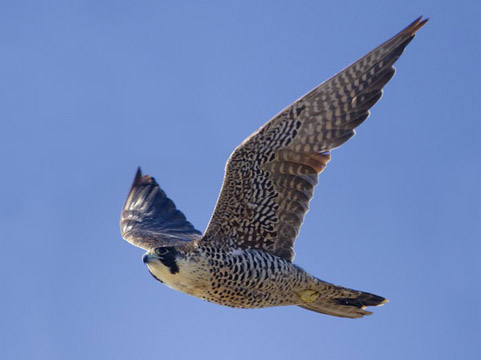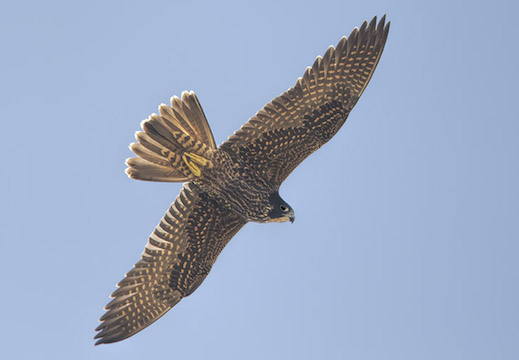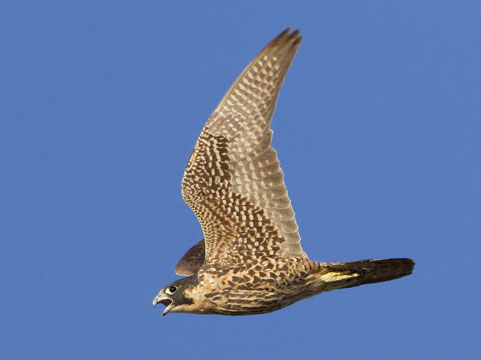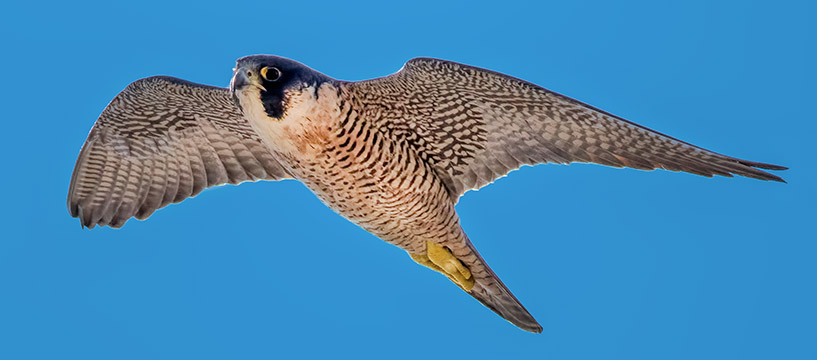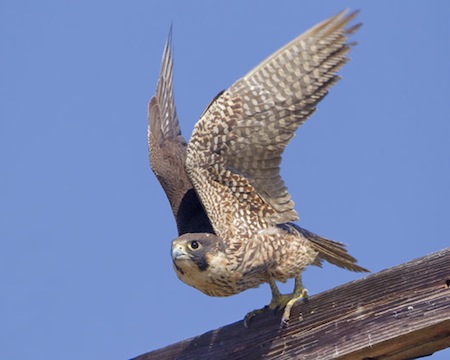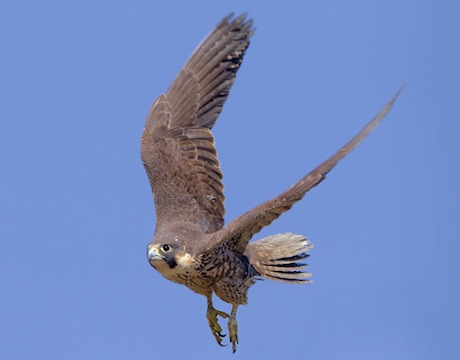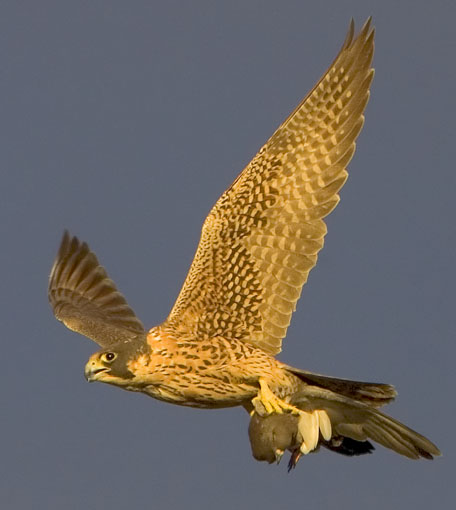 |
 |
|
|
|
|
Peregrines are probably the fastest of all animals under their own power; in a dive they can exceed 150 mph (240 km/h) and possibly exceed 200 mph (320 km/h). In flight they show broad-based but sharply- pointed wings that beat stiffly and rapidly, and a robust, powerful shape that is noticeably 'beefier' than that of their slimmer relative, the similar-sized prairie falcon. Peregrines have captured the imagination of people for thousands of years and are considered the ultimate falconer's bird. Like several other North American raptors they were hard-hit by pesticide contamination in the 1960s and 1970s, but are now recovering (notably, with the help of captive rearing projects managed by The Peregrine Fund). Adults (shown perched on this page) are dark slate-blue above and barred below; juveniles -- including several of these birds -- are brownish above and streaked below. Perched juveniles are shown on this page. At all ages, peregrines have a dark 'helmet' that permits identification at long distances. These photos were taken at the San Jacinto Wildlife Area, at Bolsa Chica wetlands in coastal Orange County, and at the Salton Sea, all in southern California. |
|
|
|

